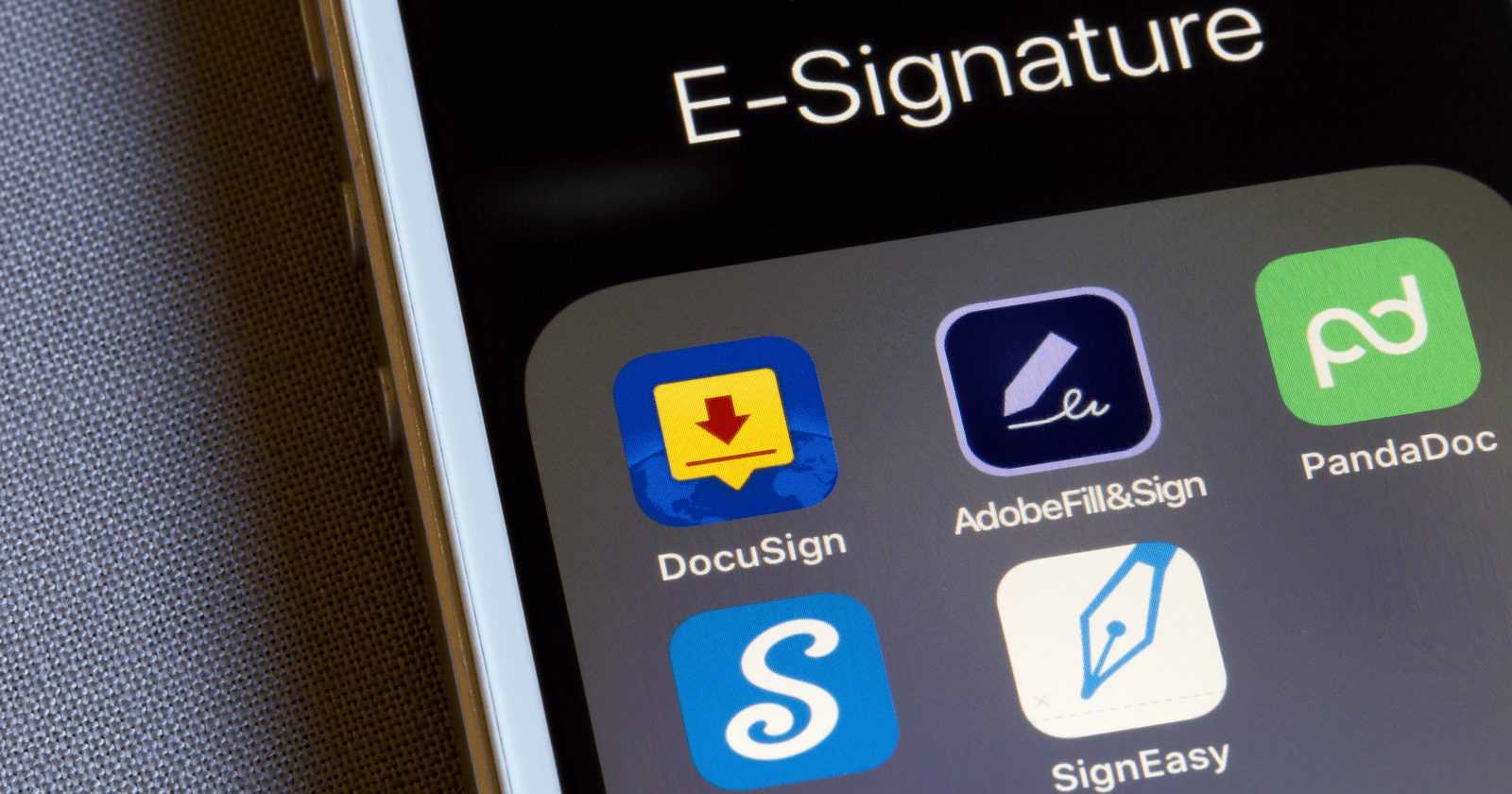You can have a video or music streaming app, a platform enabling sports fans to track their fitness progress, or an e-learning web application for students. Perhaps this app wasn’t developed with profit in mind. But it could generate revenue for you.
And the very first step to make your web or mobile app profitable is a payment gateway integration. We’ve put this guide together to compare four popular payment system providers and explain how to integrate each of them into your digital platform.
What Is a Payment Gateway?
To put it briefly, payment gateways are online systems that enable the reception of payments via the Internet. Organizations integrate them to process online money transactions for goods and services, as well as for receiving donations within the web, mobile application, or any other digital platform.
The primary function of a payment gateway is to encrypt the payment data during this transfer and prevent information theft. Upon receiving a payment request, the online payment system connects with the bank of the customer’s card to complete the transaction. If there are enough funds on the card and the transaction is approved, the client and the seller receive a notification about the successful financial operation.
It’s worth bringing up that companies leveraging external payment gateways are exempt from the responsibility of storing confidential financial information. So if your application requires secure funds transfers, payment gateway integration is a must.
Payment Gateway vs Payment Processor: What’s the Difference?
If you’ve explored details regarding payment gateways online, you might have encountered the phrase “payment processor.” Let’s not beat around the bush and get straight to the point: they are not synonyms.
As discussed before, an online payment gateway serves as a mediator connecting your web or mobile app with the financial organizations tasked with handling transaction processing. It doesn’t handle the transaction directly. Instead, it simply verifies the card’s validity, much like the way a physical credit card’s chip is checked by a point-of-sale terminal.
Conversely, a payment processor independently conducts transactions. It verifies the validity of the financial transaction made in the application and connects the buyer and seller with the bank for the funds transferring. In a nutshell, such payment aggregators oversee the entire money transfer flow, including money settlement and fraud prevention.
Read also: Fintech Revolutionizing the Finance Industry
Your comprehensive guide through the world of fintech
To summarize, the respective roles is what distinguishes a payment gateway from a payment processor. The first primarily handles the transmission of money transaction data while the second manages the payment execution. Working in harmony, they make paying online easy and smooth for both companies and buyers.
3 Types of Payment Gateways
Your approach to implementing payment options in your application varies according to the payment gateway type you’ve selected. So, before diving into the roadmap for integrating the payment system, let’s familiarize ourselves with these types.
Hosted Payment Gateways
Here’s how they work: after clicking the payment button, the customer is diverted by the system to an external webpage for the payment finalization. That is, the card data is not handled in the vendor’s app or site. PayPal and Stripe are examples of this type you may have heard of.
If everything is clear about the advantages of hosted gateways for companies (exemption from security duties), what advantages do customers find? Most users consider the ability to save payment details for later use as a plus in favor of this payment gateway type. Yet hosted gateways provide restricted control over the purchase procedure for merchants.
Pros:
- Straightforward app integration;
- Minimized PCI DSS regulatory duties.
Cons:
- Disruption in user experience due to redirection;
- Reduced influence on the checkout journey.
Self-Hosted Payment Gateways
These are opposite to the previous payment systems. Businesses that utilize self-hosted solutions manage the payment procedure on their own infrastructure. Some of the widely accepted solutions from this category are WooCommerce and Magento.
By consolidating the checkout process within your app, you’ll gain increased authority in shaping the customer’s payment journey. This also means that all financial data security issues are on your side. So it’s essential to either have in-house technical skills or engage external dedicated experts.
Pros:
- Faster checkouts;
- Greater authority regarding the transaction.
Cons:
- Less support;
- Need to handle all security issues by yourself
Custom Payment Gateways
An app that synchronizes with bespoke payment gateways enables users to pay for the order right on the checkout page. After this, each transaction will be encrypted and transferred over API for execution on the server side.
This payment gateway empowers you to fully personalize the front-end payment components, guaranteeing they harmonize with your brand identity and provide a tailored checkout flow.
Pros:
- Seamless software integration services for your app;
- Customizable checkout flow;
Cons:
- Security falls under your purview;
- Increased integration project timeline.
Each type of payment gateway has its unique features and advantages, catering to various revenue models and customer preferences. Consider all aspects illustrated above and make sure your choice aligns with your goals and technical capabilities.
The Principle Behind Payment Gateways: How Do They Work?
Before sending funds for purchased goods or services on your site, the payment gateway as an intermediary contacts the bank to confirm that the transaction can be done. To clarify, the process that starts from clicking the “pay” button and ends with the crediting of the seller’s account, can be broken down into 10 steps:
- After filling in all required data on the order summary page, buyers press the payment button.
- The application employs SSL (Secure Sockets Layer) or other encryption protocols to safeguard payment information.
- The selected payment gateway receives the encrypted data thereafter.
- Next, the system examines the credit card for validity and whether it’s blacklisted for fraud.
- The gateway transmits the payment information for authorization to the client’s bank (issuer) through the appropriate credit card network (for example, Visa, Mastercard).
- If there are sufficient funds in the customer’s account and there are no issues, the bank approves the transaction.
- An authorization response is securely sent back to the payment gateway, indicating whether the transaction is approved or declined.
- When the app receives the authorization response from the payment gateway, the customer’s order goes to further processing.
- The merchant then consolidates all approvals and sends them to the bank in a batch format or separately for each operation.
- Once received, the bank will disburse funds to the merchant for all the approved credit card transactions.
And that’s it! The answer to the question “How do payment gateways work?” is now clear to you. But although the principle is the same for all payment systems, each of them offers varied terms for cooperation with businesses. In the next section, we will discuss these differences in detail.
Stripe vs PayPal vs Braintree vs Authorize.net: Which One to Choose?
As of 2022, there were more than 900 payment service providers in the world. But many of them have more limited functionality or cooperate with organizations that run business in specific countries. We will consider the 4 most popular payment gateway providers you can choose from.
Stripe
The main advantage of Stripe is that payment processing takes place on Stripe’s servers. This allows you to avoid storing sensitive banking data on your own server.
Stripe supports over 135 different currencies, so you can display the prices of products and services in the customer’s local currency and save them from conversion fees. In case you have buyers paying in Bitcoin, you may use Stripe’s Bitcoin plugin.
Stripe boasts compatibility with an array of programming languages, including but not limited to JavaScript and Python. It gives pre-built libraries for incorporating payment systems within web applications. The essential iOS SDK for Apple Pay and Android SDK for Google Pay.
Standard pricing: 2.9% + $0.3. There are no activation charges.
Top enterprises utilizing Stripe: AliExpress, Etsy, Walmart, and ASOS.
One of our partners recognized the perks of the Stripe and requested the Visartech development team to incorporate it into the e-Learning solution we have built. This application runs on different platforms, so our task was to add a payment system that works both on web and mobile versions.
Read also: All You Need to Know About Visartech Tech Stack
Find out the right technology stack for any app development type
PayPal
Since PayPal is a well-known payment gateway, its advantage is that most online shoppers are already familiar with its interface. According to a report by Demandsage, it holds 40.52% of the worldwide market share in the digital payment sector with 431 million clients reported in 2023.
PayPal provides two methods for receiving payments in-app – PayPal Express Checkout and PayPal Payments Pro, which differ by integration flow. The first allows buyers to quickly pay through their PayPal account while with the second they pay directly on the business site and store card details on the PayPal side.
You can use PayPal as the main financing solution within your web or mobile application. However, many online sellers consider using PayPal as an alternative payment method because shoppers often prefer not to store their card data on multiple platforms. Regarding global payments, PayPal gateway is available in 200 counrties. As a PayPal client, you can make transactions in 25 different currencies.
Standard pricing: 2.9% + $0.30.
Top enterprises utilizing PayPal: eBay, Airbnb, Target, and H&M.
Braintree
This payment platform is owned by PayPal. In contrast to PayPal, Braintree offers separate business accounts tailored to individual sellers.
Braintree gives you the means to handle electronic payments through different methods. The platform is designed to work with transactions from 45+ countries and in 130 currencies.
The thing making Braintree stand out is ability to maintain regular billing and subscriptions payment models. What’s more, Braintree has a toolkit for handling complex payment scenarios (e.g. split or marketplace payments).
Standard pricing: 2.9% + $0.30. It charges 1% for international payments.
Top enterprises utilizing Braintree: Uber, Airbnb, and GitHub.
Autthorize.net
This is a subsidiary of Visa. Authorize.net supports only retailers located in the USA, Canada, and Australia. What sets Authorize.net apart is its commitment to prioritizing financial data protection; the platform is embedded with anti-fraud mechanisms.
Read also:Best Cybersecurity Practices for IT Infrastructure Protection
Use these security measures to prevent different types of hacker attacks
Choosing Authorize.net will provide you with two methods to integrate payment gateway: a standalone gateway and an all-in-one plan. The standalone gateway is used by firms that already have an account. The second, more extensive plan, includes built-in payment processing in addition to standard services.
Standalone option pricing: $25 monthly subscription fee with an additional $0.1 charge for each transaction.
All-in-one plan pricing: $25 monthly subscription fee with an additional 2.9% + $0.3 charge for each transaction.
Top enterprises utilizing Authorize.net: GoDaddy and Shopify.
So, Which Gateway to Choose?
For a quick payment gateway comparison, let’s look at the table below:
| Feature | Stripe | PayPal | Braintree | Authorize.net |
| Payment Options | AliPay, Android Pay, Apple Pay, Bitcoin, ACH | PayPal, Venmo, Android Pay, Apple Pay, Bitcoin | PayPal, Venmo, Android Pay, Apple Pay, Bitcoin | Apple Pay, PayPal, E-check, Visa Checkout |
| Payment Cards | Visa, MasterCard, American Express, Discover, AMEX, and more | Visa, MasterCard, American Express, Discover, AMEX, JCB, Diners, and more | Visa, MasterCard, AMEX, Discover, JCB, Diners, Maestro, UnionPay | Visa, MasterCard, American Express, Discover, Diners’ Club, JCB |
| Monthly Fee | $0 | $30 for Payments Pro | $0 | $25 |
| Fee per Transaction | 2.9% + $0.30 | 2.9% + $0.30 | 2.9% + $0.30 | 2.9% + $0.30/$0.1 |
| Payouts | 1-2 days | 1-2 days | 1-2 days | 1-2 days |
| Special Offers | Discounts for large clients | No fees for the first $50,000 | Returns a partial transaction fee for a processed refund | Custom pricing for businesses processing more than $500K per year |
| Locations | 25 | 200+ | 45 | United States, Canada, and Australia |
In case your business model requires more specific payment solutions, you can settle on less popular yet well-performing gateways. Namely, this can be Neteller, PaySafe, or Corefy payment gateway providers.
We hope that this detailed comparison of four main payment gateway suppliers will assist you in picking the most suitable one for your application. It’s important to note that you are not limited to choosing only one provider. Such a well-known trading platform as Amazon uses several payment gateways at once. So maybe it makes sense for you too?
Essential Features of Successful Payment Gateway Integration
When it comes to payment gateway integration services, it’s easy to get hung up on technical aspects. Are the APIs configured correctly? How to guarantee secure financial data transmission? Is the processing of transactions and payment status notifications functioning accurately?
Without a doubt, the answers to these questions lay the foundation for the correct payment system implementation. Yet if you will consider more specific features when incorporating a payment platform to your application, it can be created for better usability.
- Varied Payment Methods
A high-performing payment gateway should be versatile, accommodating many payment pathways. Consider credit cards, PayPal, and Apple Pay as essentials but don’t limit yourself to them. Alternatively, you can add payment options like bank transfers, ACH payments, or cryptocurrencies.
- Security Standards
The PCI DSS standards, crafted by the PCI Security Standards Council, guarantee the security of payment card processing and safeguard the information of cardholders. Take note of whether your payment gateway supplier is in adherence with the PCI DSS standards. Besides, the implementation of encryption protocols ( e.g. SSL/TLS) is imperative to ensure the protection of data during its transmission.
- Tokenization
Tokenization replaces sensitive card information with a non-confidential. This minimizes the likelihood of data breaches and unapproved entry to transaction data. A resilient financial settlement system ought to back tokenization, shielding customer information.
- Subscription Payments
For enterprises operating on a subscription-based or recurring billing model, the payment system integration should offer comprehensive management options. This includes the capacity to establish automatic billing cycles, handle subscription changes, and create a smooth experience for both the company and its clients.
- Mobile Payment Gateway
Mobile optimization is key to capturing a substantial market share. Just look at these numbers: in 2022, the global mobile transaction market reached $2.32 trillion. So it makes sense to ensure a hassle-free experience for consumers conducting transactions on smartphones and tablets.
- Currency Diversity
When considering going global, this feature is paramount. Verify whether the payment gateway you intend to incorporate into your application supports the currencies your potential customers use and seamlessly convert them when necessary. Of course, it’s better when the system is capable of handling as many currencies as possible since successful online businesses expand their global presence.
- Payment Status Updates
Automate notifications to keep customers informed about the state of their transactions. Whether a payment is successful or encounters an issue, timely notifications instill confidence and transparency in the transaction workflow.
- Refund and Dispute Handling
A financial transaction system should offer businesses the tools to process refunds and address payment disputes in a timely manner. This assures that you foster a positive relationship with your customers even in challenging situations.
Beyond these eight features, your application may require a broader scope of work. For example, when developing a Loan Management System, our dedicated team deployed a Split payment gateway for streamlined payment handling, as well as creating an agile payment timeline calculation. This decision was determined by the specifics of the application itself, and our aim was to provide users with flexibility by allowing them to select their preferred repayment date.
Meeting the outlined specifications allowed our payment gateway development experts to create the most adaptable payment solutions for our customers possible. As the Visartech development team prioritizes the smooth user experience, our payment gateway integration not only meets the technical requirements but also takes into account features such as mobile optimization, responsive design, and fast payment notifications.
6 Steps of Payment Gateway Integration Into Your Web or Mobile App
Companies, especially newcomers, find themselves working with this payment gateway integration on somewhat unfamiliar grounds. Below, we will examine six steps to demonstrate how to create a payment gateway considering the PayPal payment integration as an example.
Create a PayPal Business Account
It starts with PayPal Business Account registration. To do this, you should enter the following information:
- Your email address (it’s better to add a business email);
- Basic information about your company;
- Share your personal details;
- Submit your bank account info.
After signing up, you’ll get access to PayPal’s developer tools and APIs, without which PayPal gateway integration is impossible.
Gather API Credentials
These credentials identify the company and grant it access to PayPal capabilities. Users may opt for one of these verification measures – API Signature or Certificate. In addition to the different mechanisms of action (the certificate must be downloaded), the main feature between them is that API Signature credentials have a perpetual lifespan while API Certificates should be renewed every three years.
Create a Sandbox Account
Prior to implementing the payment system in a live production setting, it’s better to validate your integration first. PayPal has a testing environment to simulate transactions without using real money. To establish a sandbox profile, enter your PayPal Developer Dashboard, create sandbox accounts, and obtain the conforming sandbox API credentials.
Integrate PayPal SDK or APIs
PayPal offers various integration options, including software development kits (SDKs) and direct APIs. Depending on your development stack and requirements, you can choose the most suitable integration method.
Commonly, developers use PayPal SDKs for popular programming languages like Java, PHP, Python, and JavaScript. These SDKs streamline the integration process by providing ready-made tools and classes for managing money transactions.
Execute Payment Flows
PayPal backs diverse payment methods. With that in mind, you must implement a specific flow that matches your monetization strategy. This often covers designing customized checkout pages, and buttons within your web or mobile app. Also, don’t forget to configure webhooks to receive real-time notifications and updates on transaction status.
Test Transactions
After integrating PayPal, examine your gateway to ensure it functions as expected. Within the testing (sandbox) space, you can simulate various scenarios, including successful transactions, failed payments, and refund inquiries. Pay close attention to fault handling to give users the best payment experience possible. Apply the sandbox API credentials you get before to execute test payments.
You’ve learned the overall approach that suits both web and mobile apps. However, the components used, such as SDKs (PayPal iOS SDK and PayPal Android SDK for mobile, and PayPal’s JavaScript SDK or REST APIs for web), and the user interface design, will vary depending on the platform.
Wrapping It All Up
Our payment gateway integration guidelines will help you choose the right payment service provider and add a secure transaction processing solution to your web or mobile app. However, embarking on the journey to develop payment gateway can be challenging, especially when you’re running various business aspects.
If you find yourself in this situation, collaborating with a Visartech company that excels in payment integration services could be your perfect ally. Our dedicated experts can guide you through the entire integration process, ensuring that your payments are not only secure but also user-friendly.



